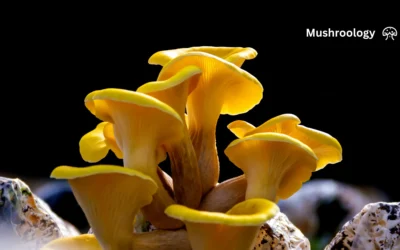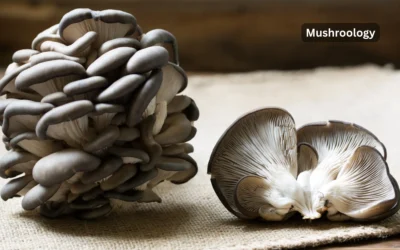Your step-by-step guide to truffle cultivation, from soil prep to first harvest
You’ve probably wondered if you can actually grow truffles on your own land. The short answer is yes – truffle cultivation is possible, but it requires patience, proper planning, and realistic expectations. Here’s everything you need to know about growing truffles, based on current research from established truffle cultivation programs.
Can truffles be cultivated successfully?
Truffle cultivation has developed significantly since techniques were first established in Europe. According to TruffleGrowing.com, “A reasonable return on an investment in truffle farming is achievable, if you follow the principles of due diligence, education and seeking professional assistance.”
The North American Truffle Growers Association (NATGA) works to “promote awareness, growth, and development of the truffle industry in North America, by promoting research, setting standards, sharing information between growers, and educating the public.”
Black truffle cultivation (Tuber melanosporum) offers the best success rates for beginners. Research published in Plant and Soil journal shows that “Truffle orchards have been established in North America since the 1980s, and while some are productive, there are still many challenges that must be overcome to develop a viable North American truffle industry.”
What makes truffle cultivation challenging
Cultivation challenges include “extended delays between establishment and production, comparatively low yields, high spatial heterogeneity in yield distribution, and orchard contamination with lower-value truffle fungi.”
Growing truffles isn’t like planting regular crops. You’re establishing a long-term partnership between fungi and trees that takes many years before you see results. The process requires “a complete understanding of truffle biology” and “several non-negotiables that must be adhered to, in developing the appropriate environment for the production of high quality truffles.”
How to start truffle cultivation from scratch
Before you plant a single tree, you need to evaluate your site conditions. Successful truffle cultivation depends on getting the fundamentals right from day one.
Step 1: Test and prepare your soil for truffle cultivation
Truffle cultivation requires soil with “pH in the range of 7.5 – 8.3” and this “is an essential part of site selection and should be carried out early in the process.” Most garden soils are too acidic for truffles.
University of Missouri research on Tuber aestivum (Burgundy truffle) confirms that soil pH requirements are critical, with T. aestivum growing wild “in soils with pH values ranging from 6.8 to” higher levels, though optimal cultivation requires the higher pH range.
Soil requirements for truffle cultivation:
- pH levels: Must be 7.5-8.3 (add agricultural lime if too low)
- Drainage: “Deep, well-draining, stony, calcareous” soils work best
- Texture: “Loamy soils with reasonable even percentages of sand, silt and clay are best. Soils with clay contents higher than 35% are generally not suitable”
Soil preparation involves “specific parameters” and “An agronomist specialising in truffle culture, provides soil adjustment recommendations.”
Step 2: Choose the right trees for truffle cultivation
You can’t grow truffles without the right host trees. Truffle cultivation relies on “a mycorrhizal symbiosis” where “They live externally on and around fine tree roots and develop a vast network of mycelium in the soil.”
Research from European truffle cultivation shows that “Inoculated seedlings of several species of deciduous and evergreen oak trees” work well for black truffle cultivation. University of Missouri studies used “Q. bicolor Willd. × Q. robur hybrid (swamp white oak × pedunculate oak) as the host” which “was chosen for its resistance to powdery mildew.”
Best tree species for truffle cultivation:
- Oak species (Quercus robur, Q. bicolor, Q. ilex)
- European hazelnut (Corylus avellana)
Purchase only certified inoculated trees from reputable suppliers. These trees have been pre-inoculated with truffle spores through controlled mycorrhization techniques developed in European research centers.
Step 3: Plant your truffle orchard properly
Plantation density “varies according to the weed control model” and “if one is considering cultivating the land often, it is best to space the trees accordingly.”
Planting considerations:
- Ensure “young trees are healthy and the root system is not damaged during planting”
- Plant during appropriate seasons when temperatures are moderate
- Follow spacing recommendations based on your management plan
Truffle cultivation maintenance and care
Once planted, your truffle cultivation project requires consistent care for several years before production begins.
Irrigation management for growing truffles
Water management is critical: “A good water supply is essential for irrigations during warmer months. Water must be good quality with relatively low salinity readings.”
Research shows that “moderate water” levels work best, and “With very hot soil conditions (Tº of 35-40ºC) there was a diminished mycorrhizal development in seedlings compared to those grown under cooler or normal summer soil conditions (Tº of 30-33ºC).”
Weed control and soil management
Proper weed control is essential because “Weeds compete with host trees for essential resources including water, nutrients and space” and “weed suppression increases mycorrhizal colonization.”
Weed management strategies:
- Maintain weed-free zones around trees
- “Weed control is necessary after planting and is most intensive during the pre-production phase of trufficulture”
- Avoid chemical herbicides that could harm mycorrhizal fungi
Annual soil maintenance
Soil management includes ongoing pH monitoring since “Improved soils are generally left a minimum 6 months for adjustment, prior to planting trees.”
Timeline and expectations for truffle cultivation
Understanding realistic timelines helps set proper expectations for your investment.
Research indicates variable timelines for truffle production. Some controlled studies show “well-mycorrhized seedlings can start producing fruiting bodies of their associated fungi under laboratory (growth chamber) or nursery conditions… in some cases as early as 1 y or less after inoculation.” However, commercial field production typically takes much longer, with “the prestigious Périgord black truffle successfully cultivated by Albert Verlhac 2 to 3 y after planting mycorrhizal Quercus pubescens” in container systems.
Realistic expectations:
- Laboratory/controlled conditions: 1-3 years possible
- Field cultivation: Much longer timeline required
- Consider that “Truffles are potentially a 30 year crop, therefore climate change considerations should play a large part in site selection decisions”
Climate requirements for truffle cultivation
Climate needs include “warm summers and cold winters with preferably, some incidence of frost” and “Natural rainfall should be in the range of 700mm (28 inches) plus annually. Rainfall distribution should be reasonably even throughout the year.”
In natural habitats, T. melanosporum grows “from 1,800 m in Granada, Spain” down to sea level in France, showing adaptability to various elevations within suitable climate zones.
Common truffle cultivation challenges
Even with proper conditions, truffle cultivation faces several documented challenges.
Biological challenges
Research identifies “orchard contamination with lower-value truffle fungi” as a significant challenge, along with “high spatial heterogeneity in yield distribution.”
Pest and disease management
Disease issues include pathogenic fungi: “Oak tree infected with pathogenic Armillaria sp.” can damage host trees, requiring monitoring and management strategies.
Professional support and resources
Given the complexity of truffle cultivation, professional guidance is essential.
Research and training centers
MicoLab in Spain provides “Quality evaluation of nursery plants colonized by truffle species, Monitoring of the mycorrhizal status in plantations, Assessment of site suitability for truffle production, Technical training courses for farmers and analysts.”
Industry organizations
The North American Truffle Growers Association offers resources for growers and maintains a Scientific Advisory Group with international experts including researchers from major universities and research institutions.
Frequently asked questions about truffle cultivation
Q: What soil pH do you need for truffle cultivation? A: Soil pH must be “in the range of 7.5 – 8.3” for successful truffle cultivation, which is more alkaline than most garden soils.
Q: How long before truffle cultivation produces results? A: Timeline varies significantly. Laboratory studies show results “as early as 1 y or less after inoculation,” but field cultivation typically requires many more years.
Q: What trees work best for truffle cultivation? A: Research shows oak species work well, including “Q. bicolor × Q. robur hybrid” which offers “resistance to powdery mildew” along with other oak species and hazelnuts.
Q: What’s the biggest challenge in truffle cultivation? A: Major challenges include “extended delays between establishment and production, comparatively low yields” and “orchard contamination with lower-value truffle fungi.”
Q: Can you do truffle cultivation in small spaces? A: No evidence supports container cultivation for commercial production. Successful cultivation requires proper site selection with adequate space for root development and mycorrhizal network establishment.
Helpful resources for truffle cultivation
- North American Truffle Growers Association (NATGA)
- TruffleGrowing.com – cultivation guidance
- MicoLab – Spanish research center for plant analysis
- Plant and Soil journal – peer-reviewed truffle research
- University mycology programs with truffle research
Important Note About Truffle Cultivation
- Truffle cultivation is a long-term investment requiring many years before production
- Success depends heavily on proper soil conditions, climate, and ongoing management
- Professional soil testing and guidance are essential before starting
- Consider climate change impacts for long-term viability
Truffle cultivation offers potential for patient investors willing to work with nature’s timeline and scientific requirements. Proper planning, realistic expectations, and professional guidance can improve your chances of success.
Your next step: Contact NATGA or a local agricultural extension office to discuss soil testing and truffle cultivation feasibility for your specific location.





